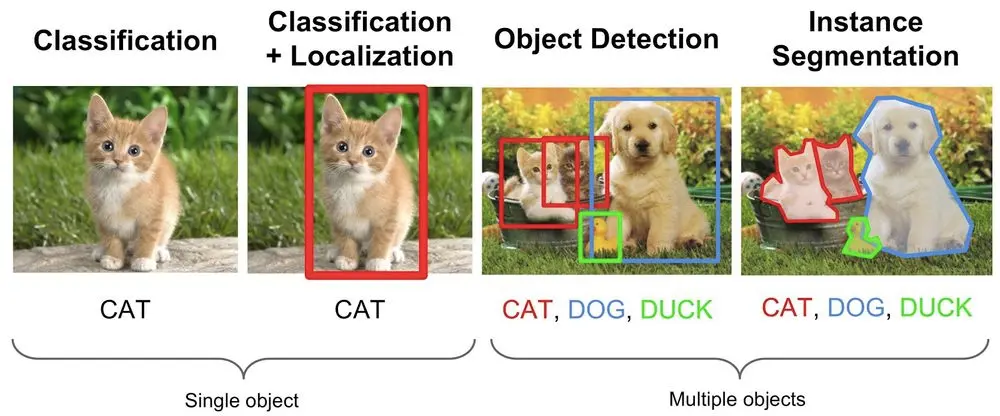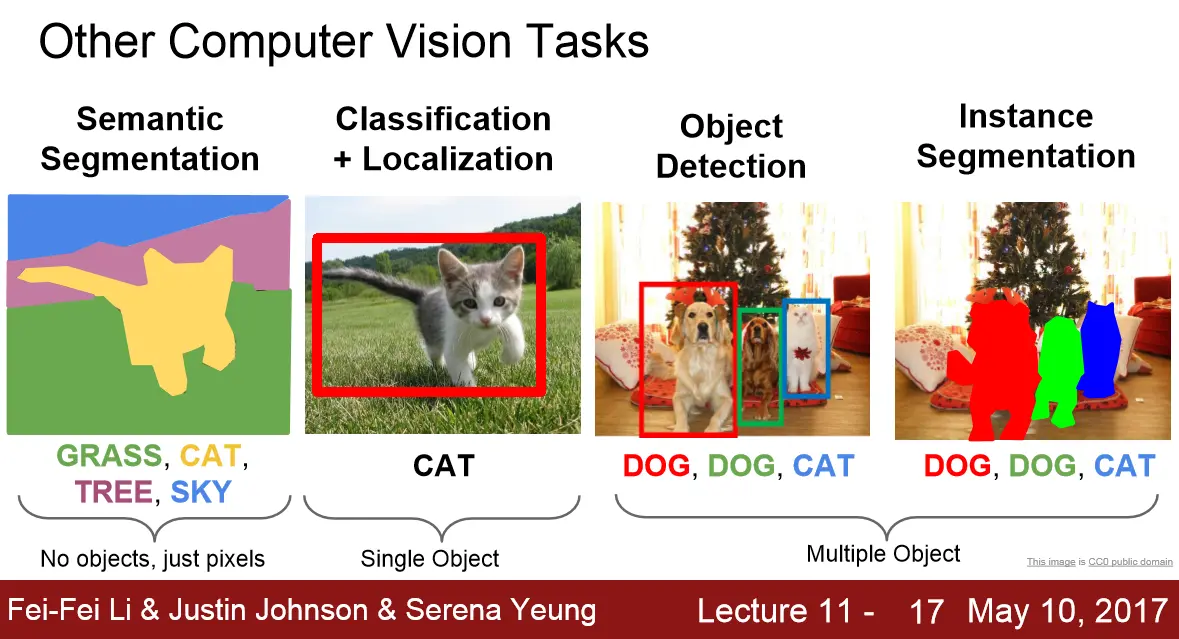Table of content
What is image segmentation?
Labeling Tools
Workforce training
Quality Management
Summary
Best practices to manage Semantic Segmentation data labeling projects
Deep learning has been very successful when working with images as data and is currently at a stage where it works better than humans on multiple use-cases. The most important problems that humans have been interested in solving with computer vision are image classification, object detection and segmentation in the increasing order of their difficulty.
While there In the plain old task of image classification we are just interested in getting the labels of all the objects that are present in an image. In object detection we come further and try to know along with what all objects that are present in an image, the location at which the objects are present with the help of bounding boxes. Image segmentation takes it to a new level by trying to find out accurately the exact boundary of the objects in the image.

What is image segmentation?
We know an image is nothing but a collection of pixels. Image segmentation is the process of classifying each pixel in an image belonging to a certain class and hence can be thought of as a classification problem per pixel. There are two types of segmentation techniques

- Segmentation :- Semantic segmentation is the process of classifying each pixel belonging to a particular label. It doesn’t different across different instances of the same object. For example if there are 2 cats in an image, semantic segmentation gives same label to all the pixels of both cats
- Instance segmentation :-Instance segmentation differs from semantic segmentation in the sense that it gives a unique label to every instance of a particular object in the image. As can be seen in the image above all 3 dogs are assigned different colors i.e different labels. With semantic segmentation all of them would have been assigned the same color.
There are numerous advances in Segmentation algorithms and open source datasets. But to solve a particular problem in your domain, you will still need human labeled images or human based verification. In this article, we will go through some of the nuances in segmentation task labeling and how human based workforce can work in tandem with machine learning based approaches.
To train your machine learning model, you need high quality labels. For a successful data labeling project for segmentation depends on three key ingredients.
- Labeling Tools
- Training
- Quality Management
Labeling Tools
There are many open source and commercially available tools on the market. At objectways, we train our workforce using Open CVAT that provides a polygon tool with interpolation and assistive tooling that gives 4x better speed at labeling and then we use a tool that fits the use case.
Here are the leading tools that we recommend for labeling. For efficient labeling, prefer a tool that allows pre-labeling and assistive labeling using techniques like Deep Extreme Cut or Grab cut and good review capabilities such as per label opacity controls.
Workforce training
While it is easier to train a resource to perform simple image tasks such as classification or bounding boxes, segmentation tasks require more training as it involves multiple mechanisms to optimize time, increase efficiency and reduce worker fatigue. Here are some simple training techniques
- Utilize Assistive Tooling: An annotator may start with a simple brush or polygon tool which they find easy to pick up. But at volume, these tools tend to induce muscle fatigue hence it is important to make use of assistive tooling.
- Gradually introduce complex tasks: Annotators are always good at doing the same task more efficiently with time and should be part of the training program. At Objectways, we tend to start training by introducing annotators with simple images with relatively easy shapes(Cars/Buses/Roads) and migrate them to using complex shapes such as vegetation, barriers.
- Use variety of available open source pre-labeled datasets: It is also important to train the workforce using different datasets and we use PascalVoc, Coco, Cityscapes ,Lits, CCP, Pratheepan, Inria Aerial Image Labeling.
- Provide Feedback: It is also important to provide timely feedback about their work and hence we use the golden set technique that is created by our senior annotators with 99.99% accuracy and use it to provide feedback for annotators during the training.
Quality Management
In Machine Learning, there are different techniques to understand and evaluate the results of a model.
Pixel accuracy: Pixel accuracy is the most basic metric which can be used to validate the results. Accuracy is obtained by taking the ratio of correctly classified pixels w.r.t total pixels.
Intersection over Union: IOU is defined as the ratio of intersection of ground truth and predicted segmentation outputs over their union. If we are calculating for multiple classes, the IOU of each class is calculated and their mean is taken. It is a better metric compared to pixel accuracy as if every pixel is given as background in a 2 class input the IOU value is (90/100+0/100)/2 i.e 45% IOU which gives a better representation as compared to 90% accuracy.
F1 Score: The metric popularly used in classification F1 Score can be used for segmentation tasks as well to deal with class imbalance.
If you have a labeled dataset, you can introduce a golden set in the labeling pipeline and use one of the scores to compare labels against your own ground truth. We focus on following aspects to improve quality of labeling
- Understand labeling instructions: Never underestimate the importance of good labeling instructions. Typically instructions are authored by data scientists who are good at expressing what they want with examples. The human brain has a natural tendency to give weight to (and remember) negative experiences or interactions more than positive ones — they stand out more. So, it is important to provide bad labeling examples. Reading instructions carefully often weeds out many systemic errors across tasks.
- Provide timely feedback: While many workforces use tiered skill workforce where level1 workforce are less experienced than quality control team, it is important to provide timely feedback to level1 annotators so they understand unintentional labeling errors so they do not make those errors in the future tasks
- Rigorous Quality audits: Many tools provide nice metrics to track label addition/deletion or change over time. Just as algorithms should converge and reduce the loss function, the time to QC a particular task and suggested changes should converge to less than .01% error rate. At objectways, we have dedicated QC and super QC teams who have a consistent track record to achieve over 99% accuracy.
Summary
We have discussed best practices to manage complex large scale segmentation projects and provided guidance for tooling, workforce upskilling and quality management. Please contact sales@objectways.com to provide feedback or have any questions.